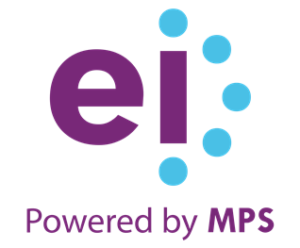The Rise Of Skill-Based Organizations

Embracing A Skill-Based Organization For Future-Ready Workforces
In the business landscape, the organizational focus will shift from mere upskilling to a transformative, skill-based framework. Companies will cultivate agile workforces that swiftly adapt, emphasizing a spectrum of skills through continuous learning and collaboration. Aligning individual skills with organizational goals will reflect a forward-thinking corporate learning strategy.
What Is A Skill-Based Organization?
A skill-based organization (SBO) is a dynamic enterprise that prioritizes reskilling and upskilling to ensure employees possess the right skills for evolving roles. By focusing on right-skilling, SBOs enhance performance and drive measurable impact on Key Performance Indicators (KPIs). This approach fosters a growth mindset, encouraging continuous learning and adaptation.
Research indicates that employees gain diverse capabilities, including cross-industry skills, making them versatile and valuable. The emphasis on skill development reduces attrition by promoting job satisfaction and career advancement. Overall, an SBO aligns individual growth with organizational goals, creating a responsive, innovative workforce prepared for future challenges.
The Imperative For A Skill-Based Focus In L&D
The imperative for a skill-based focus in L&D is paramount for future-ready organizations. As industries and technologies rapidly evolve, companies must ensure their workforce is agile and capable of adapting to continuous change. A skill-based L&D strategy transcends traditional training methods by emphasizing the cultivation of a versatile skillset aligned with both current and future organizational needs.
For future-ready organizations, the value L&D creates lies in its ability to drive performance and innovation. By focusing on reskilling and upskilling, L&D ensures employees remain proficient in essential skills while acquiring new capabilities that keep pace with technological advancements. Right-skilling, supported by AI-driven analytics, tailors development programs to address specific skill gaps and strategic objectives, optimizing the impact on KPIs and Return On Investment (ROI).
Moreover, fostering a growth mindset through continuous learning initiatives encourages employees to embrace change and seek personal and professional growth. This not only enhances individual performance but also reduces attrition by offering clear career progression paths and job satisfaction. Cross-industry skill development further broadens employee expertise, enhancing their versatility and value to the organization.
A skill-based L&D approach equips future-ready organizations with a dynamic, innovative workforce. This alignment of individual growth with organizational goals ensures sustained competitiveness and preparedness for future challenges and opportunities.
The Importance Of Right-Skilling And Competency-Based Learning In Building A Skill-Based Organization
In the contemporary corporate learning landscape, right-skilling and competency-based learning emerge as strategic imperatives for L&D professionals, surpassing traditional upskilling and reskilling. These approaches align learning initiatives precisely with the skills and competencies essential for individual and organizational success.
While right-skilling directs learning efforts towards acquiring skills that directly contribute to business objectives, ensuring strategic alignment, competency-based learning emphasizes developing specific competencies critical for performance and growth. By designing tailored learning journeys, L&D can address unique employee strengths and improvement areas, fostering a more engaged and motivated workforce. Promoting a culture of continuous learning encourages employees to adapt, evolve, and acquire new skills throughout their careers, enhancing agility and resilience.
Utilizing learning analytics to identify skill gaps and measure performance impact allows for the refinement of learning strategies, making development more precise and effective. Leveraging technological advancements like AI and adaptive learning platforms ensures contemporary, impactful learning experiences. Together, these approaches equip employees for future skill demands, maintaining a competitive edge in a dynamic business environment.
Benefits Of A Skill-Based Approach
Embracing a skill-based approach offers numerous advantages and opportunities for organizational growth and employee development.
- Strategic alignment: Ensures that learning initiatives are closely tied to organizational objectives and priorities.
- Skill diversity: Equips learners with a broad range of skills, enhancing their ability to adapt to evolving job demands.
- Lifelong learning culture: Cultivates an environment where continuous learning and skill development are valued and encouraged.
- Performance enhancement: Leads to measurable improvements in key performance metrics through targeted skill development.
- Enhanced engagement: Tailored learning paths increase learner engagement and motivation.
- Talent retention: Provides opportunities for career growth and development, reducing turnover rates.
- Innovation catalyst: Stimulates innovation and creativity by fostering a culture of skill acquisition and experimentation.
- Competitive edge: Positions the organization for success in a competitive market by ensuring a skilled and adaptable workforce.
Characteristics Of A Skill-Based Organization
Skill-based organizations have distinct characteristics that set them apart from others.
- Targeted learning initiatives: Learning programs are tailored to address specific skill gaps and align with organizational objectives.
- Personalized learning paths: These offer customized learning journeys to cater to individual employee needs and preferences.
- Data-driven decision making: Utilizes learning analytics to identify skill gaps, measure training effectiveness, and inform future learning strategies.
- Technology integration: Incorporates innovative tools and platforms such as AI and adaptive learning to enhance the effectiveness and accessibility of training.
- Performance focus: Emphasizes the practical application of skills to achieve measurable performance improvements and drive business results.
- Collaboration and knowledge sharing: Promotes collaboration among employees to facilitate skill transfer and collective learning.
- Leadership development: Prioritizes the development of leadership skills to empower managers and supervisors in driving organizational success through effective talent development strategies.
- Skills hub creation: Creates a central hub of employees’ skill data to facilitate efficient talent management, skill mapping, and strategic workforce planning.
Roadmap To Creating A Skill-Based Organization
The journey to creating a skill-based organization requires a strategic roadmap that aligns with organizational objectives and empowers employees to thrive in dynamic environments.
In this article, I outline the 3 distinct phases that organizations must consider.
Phase 1: Build The Business Case For Skills
a. Analyze industry trends and organizational goals to highlight the significance of skill-based approaches for achieving business objectives.
b. Assess current skill gaps within the organization and quantify the potential impact on performance and productivity.
c. Engage key stakeholders in discussions about the value of investing in skill development, emphasizing ROI and long-term benefits.
d. Develop a persuasive business case that outlines the benefits of transitioning to a skill-based organization, such as improved employee engagement, performance, and talent retention.
Phase 2: Deconstruct And Determine The Needs
e. Conduct a comprehensive skills assessment to identify existing competencies and areas for improvement across all levels and departments.
f. Break down job roles to identify the specific skills and competencies required for success in each position.
g. Gather feedback from employees regarding their skill development needs and career aspirations.
h. Prioritize skill development areas based on organizational goals, employee feedback, and industry benchmarks.
i. Develop a detailed plan for addressing skill gaps, including training programs, mentorship initiatives, and on-the-job learning opportunities.
Phase 3: Transition And Manage The Change
j. Create a communication strategy to effectively communicate the reasons for transitioning to a skill-based organization and the benefits it will bring to employees.
k. Provide training and support to managers and employees to help them adapt to new ways of working and to ensure they have the skills needed for success. Focus on building a skills hub.
l. Implement systems and processes to track and monitor skill development progress, and to ensure that training initiatives align with organizational goals.
m. Foster a culture of continuous learning and development by recognizing and rewarding employees who actively engage in skill development activities.
n. Continuously evaluate the effectiveness of the transition to a skill-based organization and adjust as needed to ensure ongoing success.
Conclusion
Skill-based organizations thrive in today’s dynamic business landscape by emphasizing cross-skilling and self-learning initiatives. Prioritizing right-skilling over traditional skilling mechanisms ensures employees are equipped with the necessary competencies, fostering a culture of continuous development. This approach not only enhances retention by demonstrating a commitment to employee growth but also optimizes resource allocation and enables strategic talent management. Such organizations are proven to excel in facilitating self-learning opportunities, empowering employees to adapt to evolving challenges, and contributing effectively to organizational success.
Read More:
Source link




